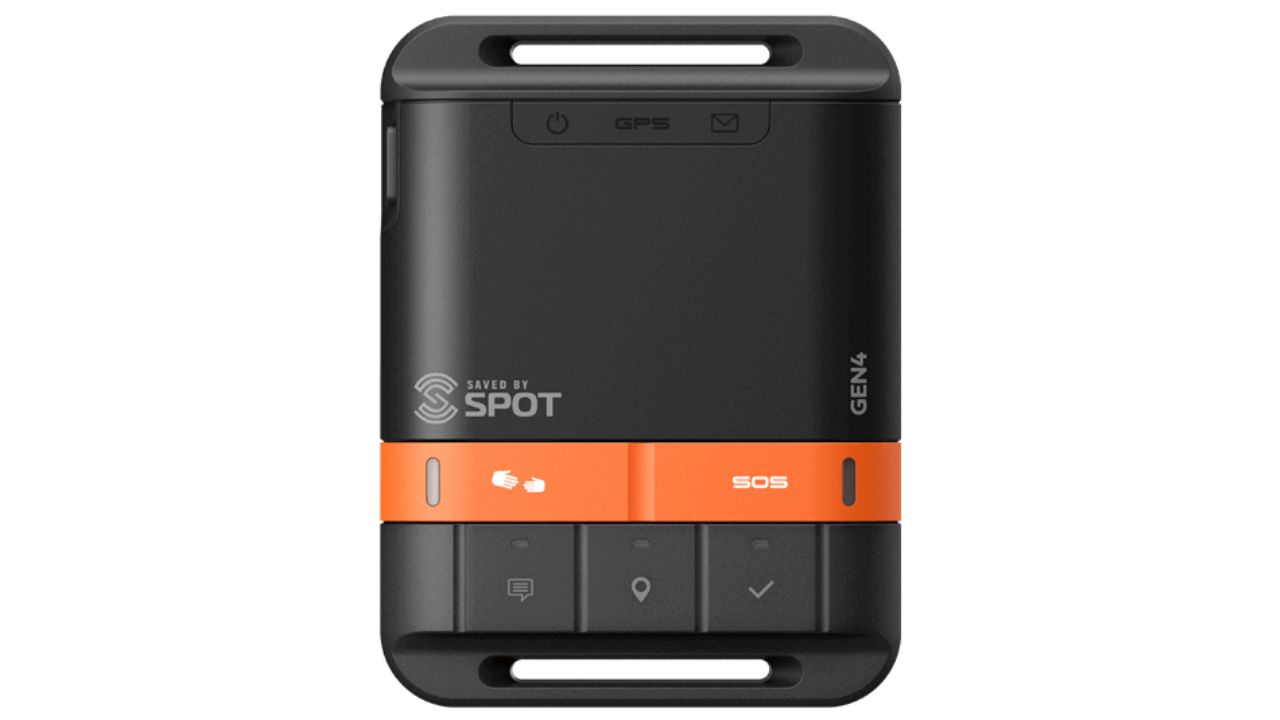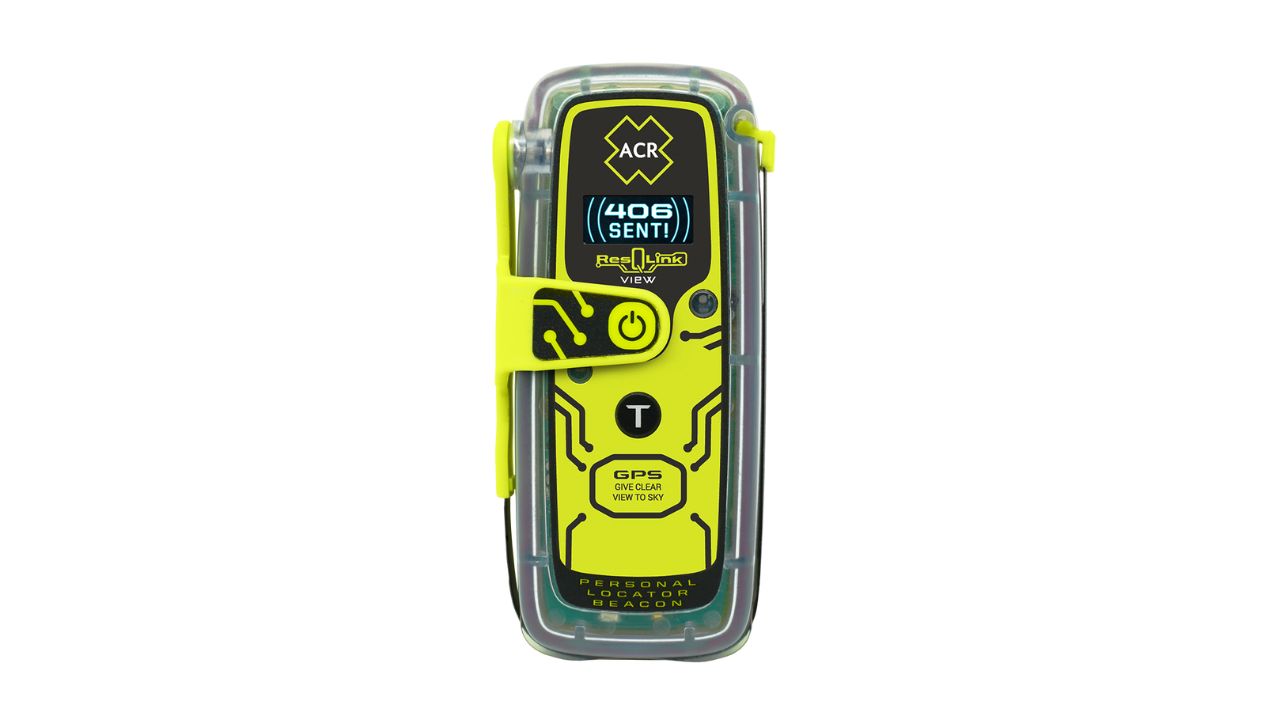I received an email recently from retired a United Airlines Captain. Here’s what he had to say:
I remember once flying out of Seattle and was granted what we called the “Mount Rainer VFR Departure”… On this day we were close enough and the visibility was good enough to see a Chinook Helicopter in the bowl at the peak. There was a group of servicemen carrying two body bags to the helicopter. They were hikers/climbers that had gotten lost and perished somewhere on the mountain. The reason I mention these tragedies is that they are too common and so unnecessary. I have been doing like adventures for many years myself. However, I have never left home without carrying my fully charged and properly registered Personal Locator Beacon.”
Brooks Y., Captain- retired
Well, Brooks, I heard what you had to say, so let’s dive in deeper about personal locator beacons and see how we can help save some lives.
What is a personal locator beacon (PLB)?
A personal locator beacon, or PLB, is a small device meant for use in an emergency that helps rescue teams find your exact location. When used, it sends an SOS distress signal on a radio frequency that can be detected by the coast guard or other emergency personnel. PLBs can be life-saving devices, and when used properly according to your country’s laws, which usually means registering them every 2 years with your local authority, your PLB device must be certified by the FCC. This is the perfect device to use for when your smartphone doesn’t have any service and you need help or want someone to know where you are.
GET SECURITY ALERTS WITH THE FREE CYBERGUY NEWSLETTER – CLICK HERE
Apple Emergency SOS vs. a personal locator beacon
For those with an iPhone 14 or later, Apple’s Emergency SOS via satellite is already saving lives. Standalone personal locator beacons came long before the Cupertino company’s new SOS feature.
In fact, despite having an emergency-ready iPhone, I still carry a PLB with me anytime I wander off the beaten path, travel, or hit the water. They are rugged, waterproof, and able to work from nearly anywhere in the world communicating with a satellite network to relay a distress call and exact location to first responders.
Not long ago, I was about 5 miles offshore on a Sea-doo when in less than a minute, the personal watercraft stalled and sank from a broken engine impeller seal. I found myself alone in the Gulf of Mexico and was able to activate the Emergency button to get a rescue from the US Coast Guard activated. It more than paid for itself that day and sold me on making it an essential survival tool.
While an iPhone 14 or later can now summon help in a similar way, I worry about its durability in adventurous parts of the world where things get wet and rough. Here are some recommendations of expert-reviewed personal locator beacons.
Where can I purchase a PLB device?
There are many PLB devices available on Amazon, and we’ve narrowed down the 5 best ones you can purchase right now.
SPOT X Messenger
The SPOT X Messenger has a Bluetooth 2-way satellite messenger, so you can connect it to your cellphone, communicate with family, or even search and rescue. It allows you to send S.O.S. messages to 24/7 Search and Rescue services, message back and forth about the nature of your emergency, and receive a confirmation when help is on the way with its keyboard messaging feature that many PLBs don’t offer. You can message any cell number or email address virtually anywhere. To use this product, you must choose 1 of their 2 subscription plan options. They have a Contract plan option that you can use year-round with different price options ranging from $11.95 to $29.95 per month, or you can choose the Flex plan that is just for seasonal use. Those prices range from $14.95 to $39.95. At the time of publishing, this product had over 800 global reviews with 61% giving it 5 stars.
SPOT Gen4 Satellite GPS Messenger
The size of the SPOT Gen4 is so convenient you can bring this along for hiking, camping, and any other outdoor activities. It provides a critical, life-saving line of communication when you travel beyond cell towers and has a tracking feature that can transmit location updates when you are moving and when you stop. You can even keep one in your child’s backpack for their walk home from the bus stop. To use this product, you must choose 1 of their 2 subscription plan options. They have a Contract plan option that you can use year-round with different price options ranging from $11.95 to $29.95 per month, or you can choose the Flex plan that is just for seasonal use. Those prices range from $14.95 to $39.95. At the time of publishing, this product had over 100 global reviews with 67% giving it 5 stars.
Get SPOT Gen4 Satellite GPS Messenger
Garmin InReach Mini
The Garmin InReach Mini device is a small, rugged, lightweight satellite communicator that enables 2-way text messaging and has Bluetooth to connect to your cellphone. You can also access downloadable maps, U.S. NOAA charts, color aerial imagery, and more by using the free Garmin Earthmate app and compatible devices. Garmin does require people to have a subscription plan, which at the time of publishing cost $14.95 per month for the monthly plan and $11.95 per month for an annual 12-month commitment plan. At the time of publishing, this product had over 2,800 reviews and 83% gave it positive reviews.
ZOLEO Satellite Communicator
The ZOLEO Satellite Communicator has 2-way global SMS text messaging and email, emergency SOS alerting, check-in, and GPS location features, all compatible with both iPhones and Androids. It also has a long-lasting lithium-ion battery that lasts over 200 hours for 8 days straight, checking messages every 12 minutes. ZOLEO does require people to use one of their subscription plans. Prices at the time of publishing are $20 for the Basic plan, $35 for the In Touch plan, and $50 for the unlimited plan. At the time of publishing, this product had over 1,800 global reviews and 80% gave it 5 stars.
Get ZOLEO Satellite Communicator
ACR ResQLink View
The ACR ResQLink is our final choice, and once activated, it can send an SOS distress signal with your GPS position directly to Search and Rescue forces worldwide. It also has attachment clips, including a belt clip, oral inflation tube clip, straps, and lanyards for increased wearability for hikers, boaters, campers, climbers, and all your outdoor adventures. You can even send non-emergency self-tests and GPS test messages to multiple contacts via SMS messaging and email with a customized message. This product did not appear to have a registration fee at the time of publishing as well. At the time of publishing, this product had over 300 reviews with 89% giving it 5 stars.
Another way to communicate location when there is no street address
What3Words is a genius idea that gives every 10 square foot box on the earth a randomly assigned three unique word combination that communicates the location of the spot more accurately than any map. The idea is that What3Words would be the replacement of the commonly used GPS latitude and longitude coordinates and with good reason. Read more about this technology here.
Do you use a PLB device for your outdoor adventures? Let us know how they work for you.
Related:
- Here’s how to use Apple’s new Emergency SOS feature
- Location service software: life-saving or life-threatening?
Copyright 2024 CyberGuy.com. All rights reserved. CyberGuy.com articles and content may contain affiliate links that earn a commission when purchases are made.







